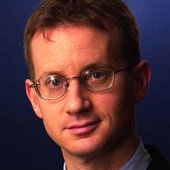New President, Different World
What kind of global economy will Obama inherit when he takes office?
November 21, 2008
As our 44th President of the United States prepares to take office, the financial winds are howling and trade policy has been sluggish for a decade. Since 2001, 150 governments have been debating the WTO’s Doha Round in Geneva, with some progress — but no resolution.
Over the same period, the U.S. Congress has debated a series of free trade agreements — although much smaller ones, together covering just 5% of U.S. world trade. Even so, it has deferred judgment on the three most recent.
But the sluggishness of trade policy seems to have meant little. Instead of slowing in sequence, globalization seems to be accelerating. To choose a simple measure, trade — the imports and exports of goods and services — has jumped from 26% to 32% of U.S. GDP. Worldwide, trade has risen from 50% to nearly 70% of world GDP.
And at deeper levels, the effectiveness of tariff systems and preferential agreements seems to be eroding. To choose our largest and most controversial agreement, for example, the share of NAFTA partners Canada and Mexico has dropped from 29% to 25% of U.S. imports in this decade.
So in some metaphorical sense, trade policy debates seem to have been the storms and waves on the surface of the ocean. They are flashy, controversial and getting lots of attention, but less meaningful than the ocean currents flowing beneath.
These currents, the main drivers of global integration in this first decade of the 21st century, turn out not to be the decisions of government. Rather, they are structural trends in communications technology, logistics industries and demographics.
A sample of each:
Ideas: Each year, tens of thousands of miles of fiber-optic cable and dozens of communications satellites click on. Combined with steady growth in computing power, they mean lower communication costs at a higher quality. A simple index is the cost of an international phone call — it has dropped by over 80% since 2000, after a 50% fall in the 1990s and a 25% drop in the 1980s. Here one can see the foundation of the global services economy.
Things: In the physical world, shipping and air-freight match the virtual world’s computers, cables and satellites by cutting the cost of moving things around. Here the simple index is the growth of the world’s container-ship fleet.
In the year 2000, the fleet totaled 2,433 ships with an average capacity of 1,700 20-foot containers. This year there are 4,276 ships with an average capacity of over 2,500 containers, meaning capacity has more than doubled — after doubling in the 1980s, and more than doubling in the 1990s.
Combined with air freight, port improvements and express delivery, this has made manufacturing trade faster, cheaper and more precise, encouraging the global supply webs that are replacing national industry and country-to-country exchange of finished goods.
People: Cross-border migration gets attention and controversy, but internal migration from land to town is the main event. Since 2000, the world’s cities have grown by 550 million people — after adding 600 million in the 1990s and 450 million in the 1980s. (For context, the world’s cross-border migrant population is 200 million.)
China’s urban population alone has jumped from 400 million to 550 million since 2000. The vast new urban populations are the men and women driving growth and industrialization in China and other big developing countries.
As they move from farms to factories, restaurants, beauty salons, construction projects, research parks and advertising agencies, these countries’ share of the world economy is rising fast — and the world’s globalized labor pool grows.
Together these trends mean the cost of moving things — especially weightless services, but also cars, potato chips, metals, shirts, TV sets and other physical goods — is steadily falling.
The operation of multinational supply chains and webs is becoming easier, making older preferential agreements less attractive. And the pool of urban entrepreneurs, workers, scientists, artists and shoppers available to participate in the world economy grows by about 70 million a year.
Yes, trade policy has moved slowly. But as this five-issue table below shows, the global economy President-elect Barack Obama nonetheless inherits looks much more “connected” and “webbed” than the one George W. Bush found in 2000, and vastly different than those Bill Clinton found in 1992 and Ronald Reagan met in 1980.
| Obama’s Webbed Economy |

Takeaways
The global economy President-elect Barack Obama inherits looks much more "connected" and "webbed" than the one George W. Bush found in 2000.
Trade policy debates are the storms and waves on the surface of the ocean — but less meaningful than the ocean currents flowing beneath.
The sluggishness of trade policy seems to have meant little. Instead of slowing, globalization seems to be accelerating.
Read previous
Stop! You’re Giving Me the Blues
November 20, 2008
